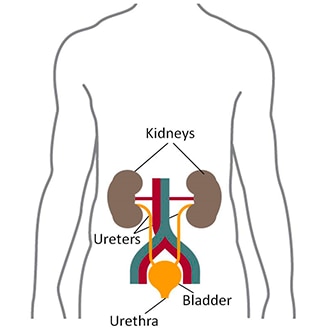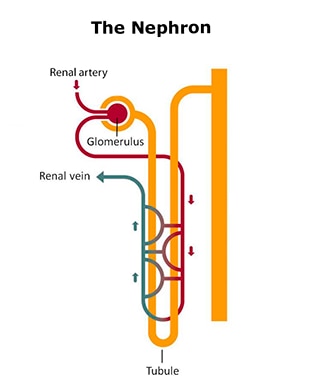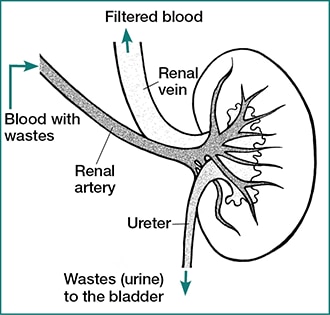What Vessel Returns Filtered Blood To The Inferior Vena Cava
On this page:
- Why are the kidneys important?
- How practise my kidneys piece of work?
- How does blood catamenia through my kidneys?
- Clinical Trials
The kidneys are two bean-shaped organs, each about the size of a fist. They are located only below the rib cage, one on each side of your spine.
Healthy kidneys filter about a one-half cup of blood every infinitesimal, removing wastes and extra water to make urine. The urine flows from the kidneys to the bladder through 2 sparse tubes of muscle called ureters, one on each side of your bladder. Your float stores urine. Your kidneys, ureters, and bladder are function of your urinary tract.

Why are the kidneys important?
Your kidneys remove wastes and extra fluid from your body. Your kidneys also remove acid that is produced by the cells of your body and maintain a healthy residual of h2o, salts, and minerals—such every bit sodium, calcium, phosphorus, and potassium—in your blood.
Without this balance, nerves, muscles, and other tissues in your body may not work normally.
Your kidneys too brand hormones that assistance
- control your claret pressure
- make red blood cells
- keep your bones strong and healthy
Scout a video about what the kidneys do.
How exercise my kidneys piece of work?
Each of your kidneys is made upwardly of about a one thousand thousand filtering units chosen nephrons. Each nephron includes a filter, called the glomerulus, and a tubule. The nephrons work through a two-footstep process: the glomerulus filters your blood, and the tubule returns needed substances to your blood and removes wastes.

The glomerulus filters your blood
As blood flows into each nephron, it enters a cluster of tiny blood vessels—the glomerulus. The thin walls of the glomerulus allow smaller molecules, wastes, and fluid—more often than not water—to pass into the tubule. Larger molecules, such equally proteins and blood cells, stay in the blood vessel.
The tubule returns needed substances to your blood and removes wastes
A blood vessel runs alongside the tubule. As the filtered fluid moves along the tubule, the blood vessel reabsorbs almost all of the h2o, forth with minerals and nutrients your body needs. The tubule helps remove excess acid from the blood. The remaining fluid and wastes in the tubule become urine.
How does blood catamenia through my kidneys?
Blood flows into your kidney through the renal artery. This big blood vessel branches into smaller and smaller blood vessels until the blood reaches the nephrons. In the nephron, your blood is filtered past the tiny blood vessels of the glomeruli and then flows out of your kidney through the renal vein.
Your blood circulates through your kidneys many times a 24-hour interval. In a single day, your kidneys filter about 150 quarts of blood. Almost of the h2o and other substances that filter through your glomeruli are returned to your blood by the tubules. Only 1 to 2 quarts go urine.

Clinical Trials
The National Institute of Diabetes and Digestive and Kidney Diseases (NIDDK) and other components of the National Institutes of Health (NIH) conduct and support enquiry into many diseases and atmospheric condition.
What are clinical trials, and are they correct for yous?
Clinical trials are function of clinical enquiry and at the center of all medical advances. Clinical trials look at new means to prevent, detect, or treat affliction. Researchers also utilise clinical trials to look at other aspects of care, such as improving the quality of life for people with chronic illnesses. Notice out if clinical trials are right for you.
What clinical trials are open up?
Clinical trials that are currently open and are recruiting can be viewed at world wide web.ClinicalTrials.gov.
What Vessel Returns Filtered Blood To The Inferior Vena Cava,
Source: https://www.niddk.nih.gov/health-information/kidney-disease/kidneys-how-they-work
Posted by: huttonlecoany.blogspot.com


0 Response to "What Vessel Returns Filtered Blood To The Inferior Vena Cava"
Post a Comment